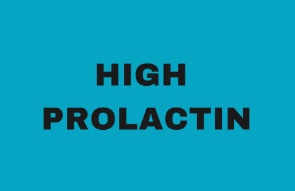ADHD Drugs: Kinds, Advantages, and Possible Drawbacks
Medication for Attention-Deficit/Hyperactivity Disorder (ADHD) is often used to assist reduce impulsivity, hyperactivity, and inattention symptoms. An overview of ADHD drugs, including types, advantages, and possible side effects, is given in this article to assist patients and caregivers in making well-informed treatment decisions.
Daftar Isi
Comprehending ADHD Medication
The neurodevelopmental disease known as ADHD is marked by recurrent patterns of hyperactivity, impulsivity, and inattention that have a substantial negative influence on day-to-day functioning and quality of life. ADHD medications work by increasing the brain’s neurotransmitter activity, which enhances behavioral regulation, impulse control, and attention span.
Neurotransmitter Disproportion
Dopamine and Norepinephrine: These neurotransmitters are important for controlling attention, focus, and executive function. As such, dopamine and norepinephrine are the main targets of ADHD treatments.
Different Types of ADHD Drugs
Drugs that Stimulate
The most often given drug for ADHD is a stimulant, which works by raising dopamine and norepinephrine levels in the brain to successfully manage symptoms.
First, medications based on methylphenidate
Methaline, or Ritalin: Ritalin improves concentration and lessens hyperactivity for several hours after a dose. It is available in immediate-release (IR) and extended-release (XR) formulations.
Concerta (Methylphenidate ER
This long-acting methylphenidate formulation allows for once-daily dosage and up to 12 hours of symptom alleviation.
Daytrana (Methylphenidate Transdermal System
A skin patch that continually administers methylphenidate all day long to provide steady symptom relief.
2. Drugs Based on Amphetamines Adderall (Amphetamine and Dextroamphetamine
This medication combines amphetamine salts to raise norepinephrine and dopamine levels, which helps with focus and impulse control.Lisdexamfetamine, also known as Vyvanse, is a prodrug that the body uses to gradually release medication, resulting in long-lasting symptom relief.
Non-Stimulating Drugs
For those who are adversely affected by stimulants or do not respond well to them, non-stimulant drugs provide an option.
1. Atomoxetine (Strattera
This selective norepinephrine reuptake inhibitor (SNRI) raises norepinephrine levels in the brain, which enhances organization, impulse control, and attention span.
Non-Habit Forming
Atomoxetine does not come with the risk of abuse or dependence associated with stimulant drugs, nor is it categorized as a prohibited substance.
2. Guandfacine (Intuniv) and Clonidine (Kapvay
These alpha-2 adrenergic antagonists work by binding to brain receptors to enhance attention, lessen impulsivity, and control hyperactivity in kids and teenagers diagnosed with ADHD.
Adjunctive therapy
Frequently used to improve symptom control and treat certain behavioral issues, adjunctive therapy is used with stimulant drugs.
Advantages of ADHD Medicines
Symptom Management: Enhanced Focus and Attention: ADHD drugs improve focus, enabling people to maintain attention on activities and tasks for prolonged periods of time.
Decreased Hyperactivity and Impulsivity
Drugs aid in the management of impulsive and hyperactive conduct, which improves social and academic behavioral regulation.
Academic Performance Enhanced Learning Abilities
ADHD drugs can help with academic accomplishment, task completion, and classroom involvement by decreasing distractibility and increasing focus.
Time management
Drugs help with task prioritization, efficient time management, and task organization, which promotes academic performance and independence.
Behavioral and Social Adjustment
Better Social Interactions:
Drugs promote positive peer connections, teamwork, and social integration by decreasing impulsive behaviors and improving self-control.
Emotional Regulation
Medications contribute to general emotional resilience and well-being by regulating mood, lowering emotional outbursts, and increasing frustration tolerance.
Possible Adverse Effects of ADHD Drugs
Typical Adverse Effects of Stimulant Drugs: may manifest as headaches, irritability, sleeplessness, stomachaches, and decreased appetite. When the dosage is changed or given more time, these adverse effects frequently go away.
Non-stimulant Medications
Tiredness, sleepiness, lightheadedness, upset stomach, and slight elevations in blood pressure or heart rate are possible side effects.
Uncommon but Dangerous Side Effects
Cardiovascular Effects
Occasionally, stimulant drugs may raise blood pressure or heart rate, which should be closely watched, particularly in people who already have heart problems.
Psychiatric Symptoms
While taking ADHD medication, some people may develop anxiety, mood swings, or an aggravation of pre-existing psychiatric disorders.
Keeping an eye on and managing medication
Supervision of Healthcare
Frequent Follow-Up Visits
Make regular consultations with medical professionals to evaluate side effects, track the efficacy of medications, and make any required adjustments.
Dose optimization
To reduce side effects and maximize therapeutic benefits, adjust medicine dosage based on patient response, symptom intensity, and tolerance.
Patient and Family Education Medication Education
Inform patients and caregivers about ADHD drugs, recommended dosages, possible adverse effects, and practical methods for efficiently adhering to medication schedules.
Keeping an Eye on Behavioral Changes:
Keep an eye out for any alterations in mood, eating, behavior, or sleep habits to spot any side effects or new problems that need to be addressed.
Long-Term Treatment Considerations
Continuity of Medical Attention
Consistent Medication Use
To maintain symptom control and improve long-term outcomes for people with ADHD, stick to prescribed medication regimes.
Gradual Transition
To reduce interruption and guarantee ongoing symptom management, gradually switch between prescription formulations or modify dosages while under medical supervision.
Multimodal Treatment Approach Comprehensive Treatment Plans
To address ADHD symptoms comprehensively, combine behavioral therapy, educational activities, and lifestyle modifications with medication management.
Individualized Care
Customize treatment regimens to each patient’s specific requirements, taking into account developmental phases, comorbid illnesses, and therapeutic objectives.
In summary
ADHD drugs are essential for controlling impulsivity, hyperactivity, and inattention symptoms. This helps people become more focused, perform better in school, and engage with others. Effective treatment options include both non-stimulant drugs like atomoxetine and alpha-2 agonists and stimulant drugs like methylphenidate and amphetamines.


